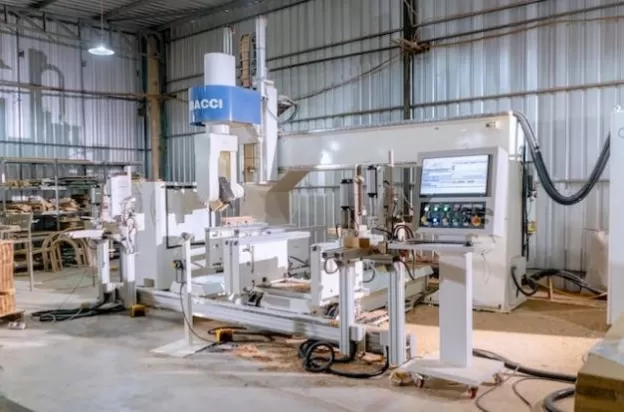
Understanding how CNC machining technology operates is pivotal in optimizing modern manufacturing processes. “CNC” stands for Computer Numerical Control and is a subtractive manufacturing process essential for precision machining.
Therefore, this article takes you through what is CNC machining technology and its commonly used terminologies. We also discuss different types of CNC machines, popular machining processes, and the advantages of CNC machining technology.
What is CNC machining technology?
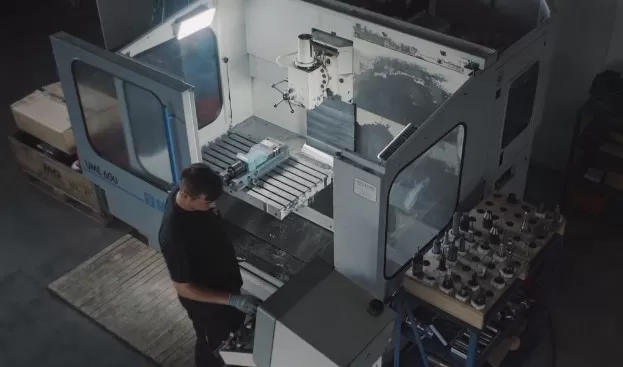
Computer Numerical Control (CNC) machining technology is a subtractive manufacturing process that uses a programmed set of codes to control specific machine tools for production. Alternatively, CNC machining technology is an automated process allowing higher precision manufacture and tight tolerance parts design.
The difference between CNC machine technology and 3D printing is that it is “subtractive”- and involves cutting materials away from a solid block. The person who operates a CNC machine is called a CNC machinist/operator.
Common terminologies for CNC machining technology
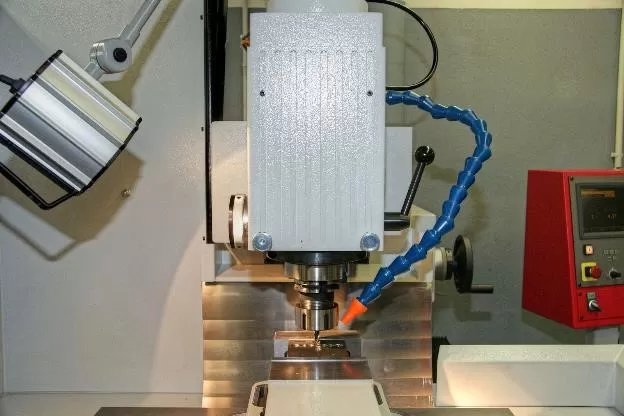
Check out the frequently used terms for describing what is CNC machining technology and the computer numerical control process.
1.Computer-aided design (CAD)
Computer-aided design (CAD) represents the graphics software for illustrating the two-dimensional (2D) or three-dimensional (3D) machined parts design. AutoCAD and FreeCAD are some popular CAD tools for engineering CNC drawing.
2.Computer-aided manufacture (CAM)
Do you remember when we said CNC machines are automated? CNC precision machining is automated and requires computer-aided manufacturing (CAM) software that processes the CAD into CNC programs (G-codes and M-codes) that the machine understands.
3.G-code
The “G” in G-code stands for Geometry and commands the CNC machine’s movement, like how, where, and speed to move along the X, Y, or Z axis.
4.M-code
The “M” in M-code stands for Miscellaneous and commands non-CNC machining processes that do not include cutting, milling, or drilling. Instead, M-codes control miscellaneous operations like regulating the coolant flow, tooling changes, and production starts and stops.
5.Distributed numerical control (DNC)
CNC machinists overseeing multiple CNC machines, even at distant locations, can utilize Distributed Numerical Control (DNC) systems. DNCs are central servers collecting and processing machined part designs into programmed commands for connected CNC machines.
6.Manufacturing data collection (MDC)
Just as the name implies, manufacturing data collection (MDC) is a system that collates real-time machining data from CNC machines. It helps the machine operators to identify bottlenecks and suggest manufacturing improvements.
CNC machining technology: How does it work?
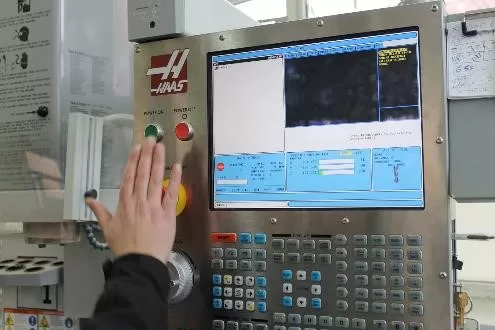
How does CNC machining technology work? We explain everything you need to know in a simple but professional manner!
Step 1: Creating the CAD drawing
The first step in the CNC machining technology process is illustrating the idea of the machined parts on paper. However, we use CAD software for precision machining designed for two-dimensional (2D) and three-dimensional (3D) modeling. The CAD drawing should be a drawn-to-scale model that presents information on intrinsic parameters like thickness, depth, and other dimensions.
Step 2: Converting from CAD to CAM models
How does CNC machining technology work using the CAD model? The answer is CNC machines cannot interpret CAD models.
Computer-aided drawing (CAD) is for machined parts design, while Computer-aided manufacture (CAM) represents the manufacturing process design. Hence, the CAD is converted to CAM that CNC machining programs can implement.
So, how do you convert from CAM to CAD models for CNC machining technology?
- Import CAD model to CAM software
- Define appropriate manufacturing processes like drilling, milling, or turning
- Choose the correct tooling and CNC machining parameters like cutting speed, cavity depths, and feed rate
- The software helps to generate precision machining toolpaths for the CNC machine during manufacture
- Simulate the toolpaths and check for errors
- Use software to generate G-codes and M-codes that describe the toolpaths
Step 3: CNC machine configuration
In this step, the CNC machinist sets up the precision machine to execute the programmed G-codes and M-codes. It includes preliminary checks of the machining input parameters and fastening the workpiece on the CNC machine.
Step 4: CNC machinists execute the program
Now is when the CNC machine commences manufacturing via the input codes and moves accordingly. Remember that CNC machining technology is automated and runs until the machinist presses stop. Therefore, the operator must be alert while observing the process for sudden errors, emergencies, or needs for adjustment.
What are the types of CNC machines?
The machines for CNC machining technology can be classified based on their number of axes or orientations.
CNC machines based on the number of axes
The CNC machining axis indicates the available directions to move the machine. Therefore, based on this categorization, the primary types of CNC machines are 2-axis, 3-axis, 4-axis, 5-axis, and 6-axis machines.
2-axis CNC machines
They can move in only two directions: the X-axis and the Z-axis. 2-axis CNC machine types are typically for cutting and turning processes.
3-axis CNC machines
The 3-axis precision machining involves movement in only three directions – the X-axis, Y-axis, and Z-axis. They are excellent for milling and turning processes.
4-axis CNC machines
They can move in the conventional X, Y, and Z axes with an additional rotary movement of one of the A, B, or C axes. Understand that the A, B, and C axes are rotary motions around the X, Y, and Z, respectively.
5-axis CNC machines
The 5-axis CNC machine types can move in the X, Y, and Z axes with two rotary axes between the A, B, and C choices. CNC machinists can alternatively use 4+1 or 3+2 axes CNC machines.
6-axis CNC machines
They can be expensive but move in all six linear and rotary directions types. That implies possible movements in the X, Y, and Z axes and the A, B, and C rotary axes.
Note: higher types of CNC machines based on axes exist, but these are the more common ones
CNC machines based on orientation
There are three types of CNC machines when using orientation as the basis. Read about each one below.
Vertical machining center CNC machine
These CNC machine types are called “vertical” because the work table is set up perpendicularly to the spindle axis of the precision machine.
Horizontal machining center CNC machine
It is termed “horizontal” since the work table is positioned in a parallel setup to the spindle axis of the precision machine.
Universal machining center CNC machine
These types of CNC machines combine the orientation of both the vertical and horizontal machining center CNC machines. However, universal machining center configurations are only available on the 5-axis and higher CNC models.
What are the popular CNC machining technology processes?
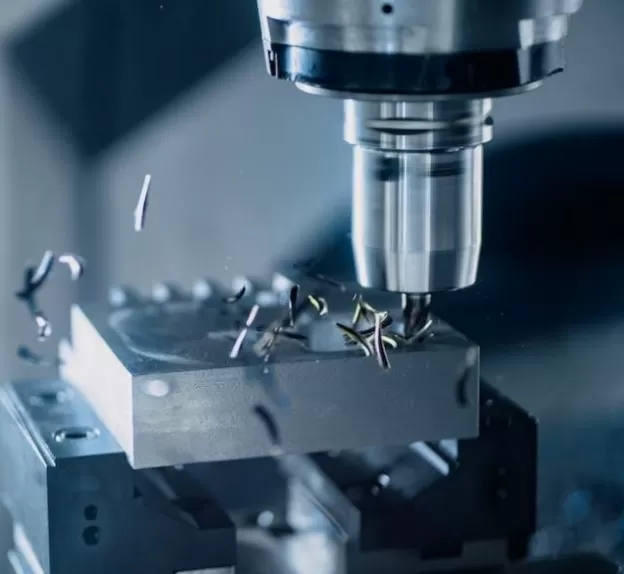
Learn about the processes that describe how CNC machining technology works. We explain the popular ones and list the others in the next section.
CNC milling
CNC milling is the CNC machining process that implements computer numerical control to automate cutting tool movement in the milling machine. The milling tool (or cutting tool) moves relatively to the material blocks while rotating to perform cutting actions. Face milling, end milling and slab milling are the most commonly used CNC mill applications.
CNC drilling
CNC drilling is the CNC machining process that automates the movement of drill bits to carve out holes against a stationarily-held workpiece. Twist drilling, center drilling, and step drilling are some common CNC drill applications.
CNC routing
This CNC machining process is very similar to the CNC milling process. However, CNC routing involves a stationary workpiece that the cutting tools move across in the 3-axis directions to divide it. CNC routers are faster than CNC mills but are usually recommended for only the softer material blocks.
CNC grinding
CNC grinding is a surface finish CNC machining process that rubs (or grinds) flat but rotating abrasive wheels against the machined workpiece. The result is a smoother CNC product.
Additional CNC machining technology processes
While those are the common processes for CNC machining technology applications, there are still more. We also have:
- CNC plasma cutting
- CNC broaching
- CNC honing
- CNC lapping
- CNC water jet cutting
- CNC laser cutting
- CNC flame cutting
- Electric discharge machining
Advantages of CNC machining technology
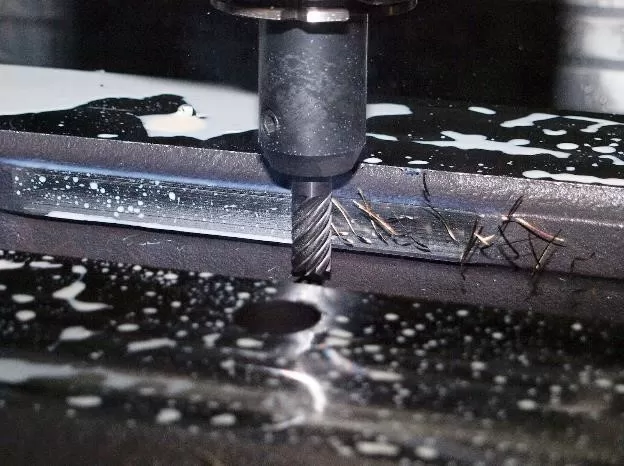
As a CNC machinist or customer, here are some benefits of CNC machining technology processes.
Precision machining
The accuracy of CNC machines makes them suitable for applications in industries like aerospace and automotive that demand tight precision machining levels.
Faster production speed
Compared to traditional manufacturing, CNC machining technology offers faster production times. It is automated, and there is reduced human labor, which could waste time.
Cost-effective
The faster machining time and fewer chances of errors that cause material wastage implies an overall reduced processing cost for bulk manufactures.
Consistent material design
The CNC machining process is automated. Therefore, maintaining quality is easier since every machined part looks the same.
Data tracking
Another advantage of CNC machining technology is data tracking. CNC machines provide manufacturing data that allows the operator to track the production process and see the exact causes of error or recognize routes for optimization.
Disadvantages of CNC machining technology
There are no obvious disadvantages of CNC machining technology. However, the need for skilled CNC machine operators or the initial costs of purchasing machines or producing unit machined parts could pose challenges.
Conclusion
We hope you found this CNC machining technology guide useful. Whether you require small or large-scale parts manufacture – CNC machining processes are the go-to option. You can always reach out to professional experts or contact us if you need more information. We also have an online quotation platform where you can upload your 3D models and get a reply from our engineers within 2 hours.


